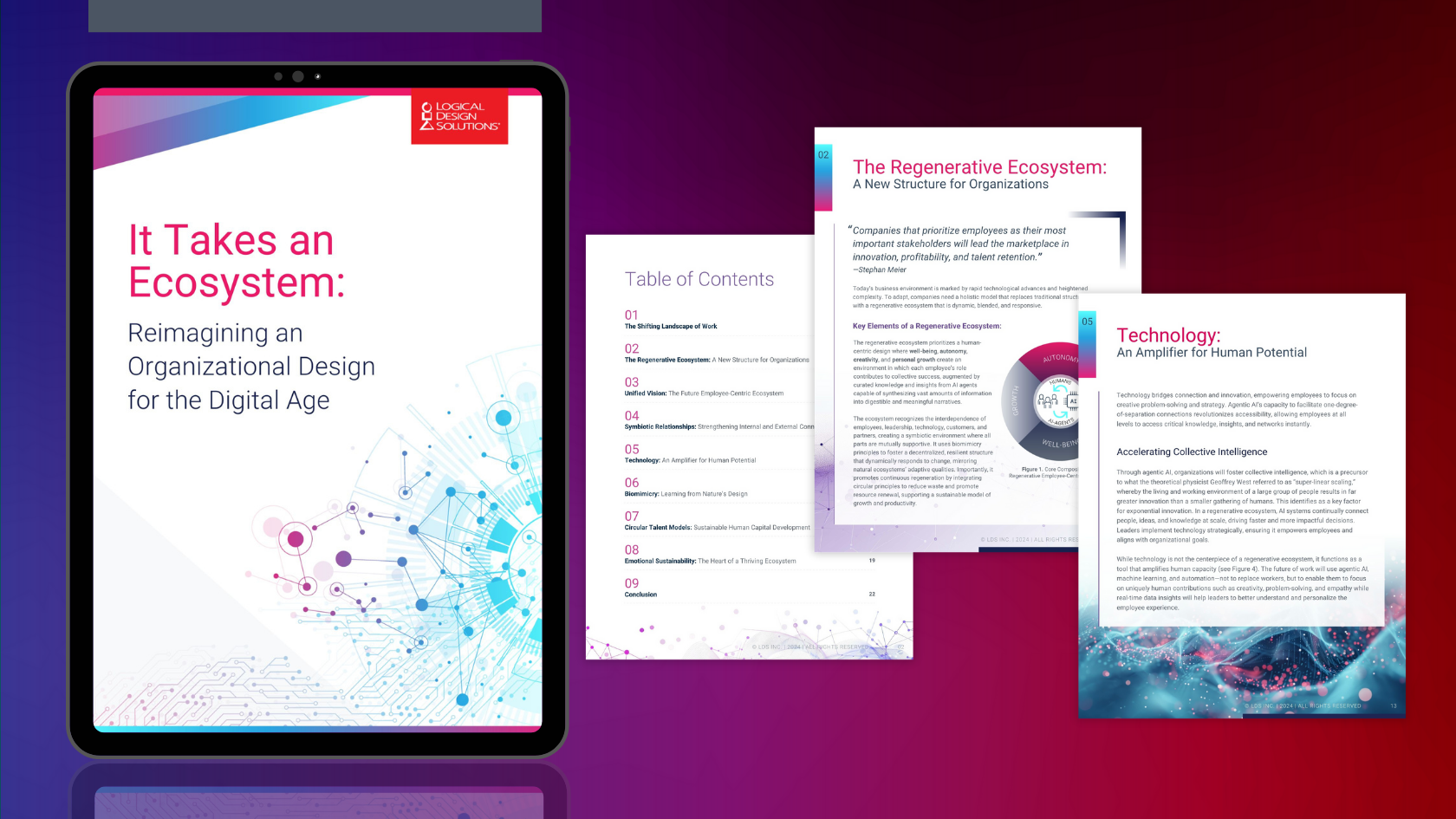2 min read
Hyper-Connecting the Worker Experience Through Mobile Technology
Since the first generation of mobile networks began to emerge four decades ago, digital technologies have revolutionized user capabilities through...
2 min read
Logical Design Solutions
:
4/8/24 9:17 PM
AI’s greatest possibility is not in replacing humans. It is in realizing its potential to assist organizations in their efforts to create previously unimaginable solutions. - Jason McNamara, SVP & CIO at Harvard Business Publishing
Artificial Intelligence mimicking and eventually exceeding human intelligence is a source of both apprehension and awe. AI already excels at repetitive tasks, pattern recognition, and data analysis at a speed and scale that cannot be matched by humans. This ‘outsourced cognition’ is leading to extraordinary innovations. For example, GenAI is already capable of analyzing vast amounts of information and providing insights, patterns, and trends that can lead to groundbreaking discoveries that humans might otherwise miss, such as the prediction of latent disease threats, cybersecurity flaws, or unusual climate patterns.
This technology also facilitates the rapid creation of highly personalized learning tools, the exponential acceleration of clinical trials, and critical predictive maintenance on industrial machinery. At some not-too-distant point in the future, we are looking at entities of synthetic origin that not only emulate human intellect but surpass it in unimaginable ways. This will herald what is being called ‘the singularity’ – when a machine’s cognitive abilities are unfathomably beyond what any human mind could comprehend or even perceive.

Figure 1. Frontier Technology and the Augmented Worker
Today, human workers are already performing their jobs more efficiently and effectively by leveraging frontier technologies, while machines are automating routine tasks and providing valuable data to support the workforce. This integration allows workers to focus on tasks that require human ingenuity and differs from traditional approaches to work in several key ways. It represents a shift from a labor-centric model to a more technology-focused approach that leverages advanced technologies to augment the capabilities of human workers. Organizations today can spur innovation, streamline processes, reduce costs, boost productivity, and create previously unattainable value streams, while at the same time usurping new technologies to achieve results that were previously thought of as unattainable.
While automation implies that machines take over a human task, augmentation means that humans collaborate closely with machines to perform a task. Today, augmented workers span various industries and can involve integrating different technologies. In healthcare, for example, surgeons may use augmented reality during surgeries to overlay vital information, such as patient data or real-time imaging, onto their field of view for more precise procedures. In manufacturing, workers may use augmented reality glasses to receive step-by-step instructions and visual cues during the assembly process, improving accuracy and efficiency, while office workers are using AI-driven virtual assistants to automate routine tasks, manage schedules, and provide insights, as well as leveraging collaborative platforms with AI features for data analysis, decision support, and project management.
As a simple example, if we start using new technology to map choices that are “out-of-domain,” (i.e., from different times, different places, and across different industries), our ability to think “outside the box” increases dramatically. One superpower of Generative AI (GenAI), for example, is that it allows organizations to use approaches that go far beyond the normal boundaries of conventional thinking within the context of a particular industry.
Rather than limit its thinking to in-house experiences, a company looking to improve service for its customers could consider broader examples in everyday life in which people are distressed, inconvenienced, or agitated, and discuss how these might be remediated. By using GenAI to research tactics and precedents, pulling out promising ideas, and combining and testing the results in the context of the company’s customer experience, the potential for new solutions becomes apparent. This approach offers a much deeper, richer, and more diverse knowledge base to elicit innovation and creativity.
This new paradigm also emphasizes continuous learning and development, while traditional approaches to work focus on specific job skills. With the rapid pace of technological change, it is essential for workers to continually develop new skills and knowledge to remain relevant in the workforce.
The future workforce will be augmented in three key areas – problem-solving, decision-making, and value creation, while at the same time elevating the importance of employee engagement by allowing workers to focus on more meaningful and challenging aspects of their work.

2 min read
Since the first generation of mobile networks began to emerge four decades ago, digital technologies have revolutionized user capabilities through...

3 min read
Value Creation is the use of imagination or original ideas to create something new. Today, frontier technologies are forcing organizations to...

2 min read
Foreword This white paper introduces a framework for a new organizational design—an evolved business ecosystem model that uses AI agents, biomimicry,...